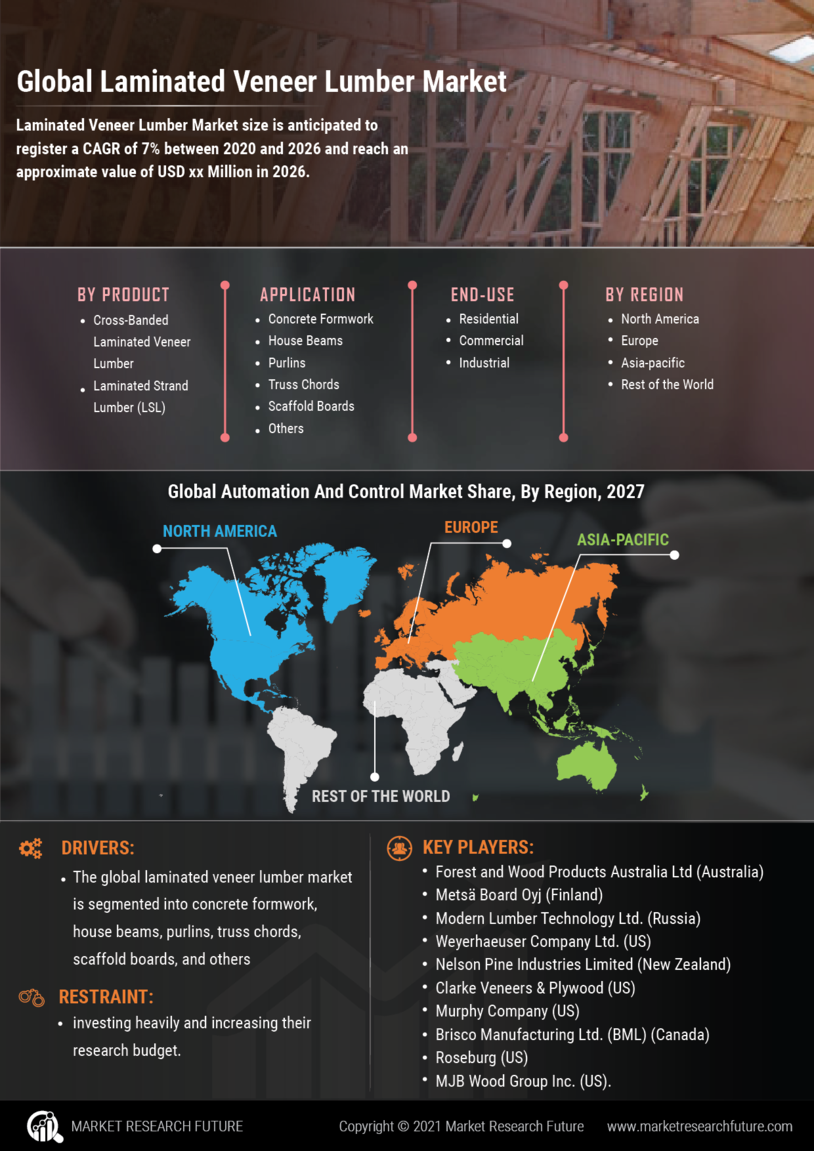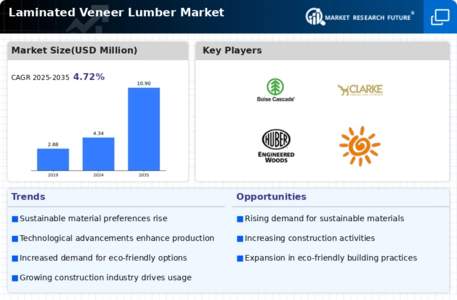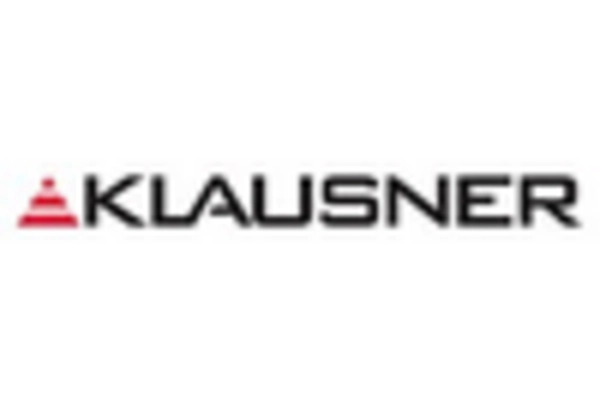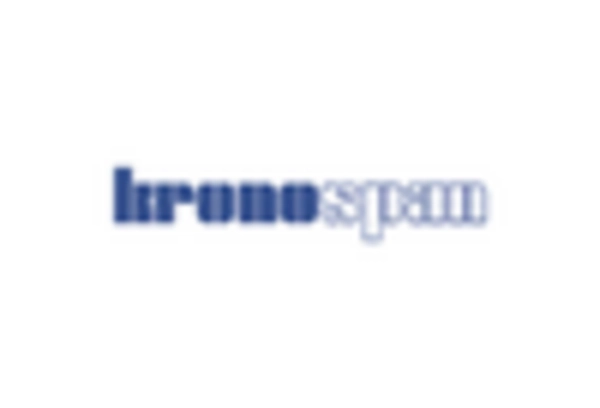Regulatory Support
Regulatory frameworks are becoming increasingly supportive of the Laminated Veneer Lumber Market, as governments worldwide implement policies aimed at promoting sustainable building practices. Incentives for using eco-friendly materials, including laminated veneer lumber, are being introduced to encourage builders to adopt greener alternatives. These regulations often include tax benefits, grants, and subsidies for projects that utilize sustainable materials, thereby enhancing the market's attractiveness. In 2025, it is anticipated that such regulatory measures will contribute to a market growth rate of approximately 4%, as more construction projects align with environmental standards. The proactive stance of regulatory bodies in promoting laminated veneer lumber not only fosters market expansion but also encourages innovation within the industry, leading to the development of new products and applications.
Urbanization Trends
The Laminated Veneer Lumber Market is significantly influenced by ongoing urbanization trends, particularly in developing regions. As populations migrate towards urban centers, the demand for residential and commercial buildings surges, creating a robust market for construction materials. Laminated veneer lumber, known for its strength and versatility, is increasingly favored in urban construction projects due to its lightweight nature and ease of handling. In 2025, urban areas are projected to account for a substantial portion of new construction, with laminated veneer lumber being a preferred choice for sustainable building practices. This trend is likely to drive market growth, with estimates indicating a potential increase in demand by 7% in urbanized regions. The adaptability of laminated veneer lumber to various architectural designs further enhances its appeal in rapidly growing cities.
Technological Innovations
Technological advancements play a pivotal role in shaping the Laminated Veneer Lumber Market. Innovations in manufacturing processes, such as improved adhesive technologies and automated production lines, enhance the quality and efficiency of laminated veneer lumber. These advancements not only reduce production costs but also improve the performance characteristics of the final product, making it more appealing to builders and architects. In recent years, the introduction of advanced software for design and structural analysis has further facilitated the integration of laminated veneer lumber into modern construction projects. As a result, the market is expected to expand, with estimates suggesting a growth rate of around 5% annually through 2025. This trend indicates a strong alignment between technological progress and market demand for high-performance building materials.
Sustainability Initiatives
The Laminated Veneer Lumber Market is experiencing a notable shift towards sustainability, driven by increasing environmental awareness among consumers and regulatory bodies. As the demand for eco-friendly building materials rises, laminated veneer lumber, which utilizes less wood than traditional lumber, becomes an attractive alternative. This material is often sourced from sustainably managed forests, aligning with global efforts to reduce deforestation and promote responsible forestry practices. In 2025, the market is projected to witness a compound annual growth rate of approximately 6%, reflecting the growing preference for sustainable construction materials. Furthermore, the emphasis on reducing carbon footprints in the construction sector is likely to bolster the adoption of laminated veneer lumber, as it offers a lower environmental impact compared to conventional wood products.
Rising Construction Activities
The Laminated Veneer Lumber Market is poised for growth due to the resurgence of construction activities across various sectors. With increasing investments in infrastructure development, residential housing, and commercial projects, the demand for high-quality building materials is on the rise. Laminated veneer lumber, with its superior strength-to-weight ratio and aesthetic appeal, is becoming a preferred choice among builders and architects. In 2025, construction activities are expected to increase by approximately 8%, further driving the demand for laminated veneer lumber. This surge in construction is likely to be fueled by urban development initiatives and government spending on infrastructure, creating a favorable environment for the laminated veneer lumber market. The versatility of this material in both structural and decorative applications enhances its market potential.


















Leave a Comment